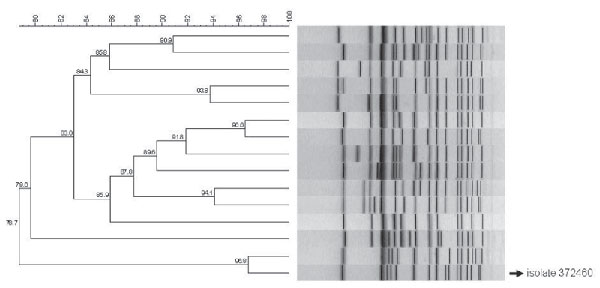Volume 16, Number 5—May 2010
Letter
Fluoroquinolone-Resistant Typhoid, South Africa
Figure

Figure. Dendrogram of pulsed-field gel electrophoresis patterns representative of the 15 largest clusters of Salmonella enterica serotype Typhi isolates identified in South Africa during 2005–2009. The pattern of isolate 372460 is indicated. Scale bar represents percentage similarity of pathogens.
Page created: December 23, 2010
Page updated: December 23, 2010
Page reviewed: December 23, 2010
The conclusions, findings, and opinions expressed by authors contributing to this journal do not necessarily reflect the official position of the U.S. Department of Health and Human Services, the Public Health Service, the Centers for Disease Control and Prevention, or the authors' affiliated institutions. Use of trade names is for identification only and does not imply endorsement by any of the groups named above.